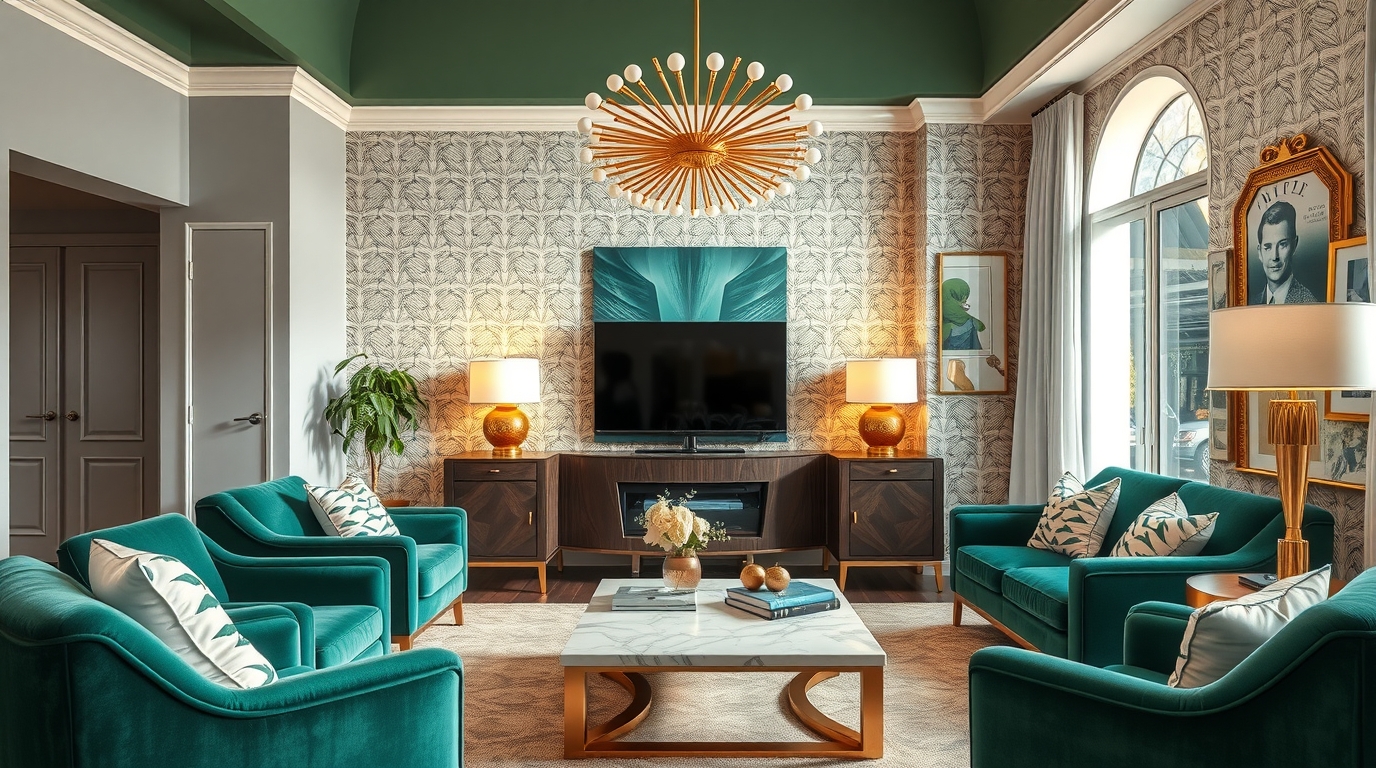Step into certain apartments and hotels right now and you will feel as if you have walked into the 1920s with a modern filter. Bold geometry on the walls, polished brass fixtures catching the light, and deep jewel tones layered with velvet and marble. The Art Deco revival is in full swing, and it is transforming how people decorate their spaces.
Art Deco was born a century ago, shaped by the optimism of the Jazz Age. It thrived on luxury, symmetry, and craftsmanship. Skyscrapers carried its stamp, movie theaters sparkled with its details, and even everyday objects wore its patterns. For decades the style faded as tastes shifted to mid century simplicity and later to minimalist restraint. But cycles of design always return, and in 2025 the glamour of Deco feels new again.
What makes this revival different is the way people are mixing old and new. Few are decorating entire homes in Deco style. Instead, they are borrowing its spirit and weaving it into contemporary spaces. A modern kitchen might feature sleek appliances but also bold black and gold tiles on the floor. A living room may hold a plain sofa softened by a velvet armchair with Deco curves and a mirrored side table. The result is not a museum of the past but a dialogue between eras.
The trend is also riding on a broader shift away from minimalism. After years of white walls and neutral furniture, people are hungry for depth and richness. Art Deco offers exactly that. It allows color without chaos, ornament without clutter. Emerald, sapphire, and ruby shades create mood while brass and chrome give sparkle. The look feels indulgent, yet controlled.
Retailers have noticed. Lighting companies are releasing chandeliers shaped like sunbursts and layered glass. Furniture makers are playing with lacquer finishes, inlays, and bold silhouettes. Wallpaper brands push prints with fans, arches, and zigzags. Even mass market chains are offering pieces inspired by the movement, showing that Deco is no longer a niche luxury.
Social media has given the revival global reach. Designers post videos of dramatic makeovers where plain rooms are transformed with patterned floors, angular mirrors, and jewel toned paint. Influencers frame their selfies against scalloped headboards or cocktail carts trimmed in gold. These images spread quickly, convincing viewers that Deco is not intimidating but inviting.
There is a deeper reason for the comeback too. Deco was originally a response to rapid change. The 1920s and 30s were marked by technological advances, social upheaval, and new wealth. Today’s world feels similarly unsettled. People crave stability but also want to celebrate progress. Deco balances those moods. It grounds a space in order through its symmetry while also projecting optimism through its richness.
Critics sometimes argue that the revival is too nostalgic, that it clings to glamour instead of embracing modern simplicity. Yet homes are personal spaces, and many find comfort in ornament. The appeal of Deco is not just its beauty but its ability to make everyday life feel elevated. A glass of water tastes different when placed on a marble-topped table with brass legs. A hallway feels different when lit by a geometric sconce. Small touches transform the mood of a room.
The Art Deco revival is not likely to fade quickly. Its language of luxury adapts easily to modern needs. It can be bold or subtle, expensive or affordable. For some, it is a velvet sofa in emerald green. For others, it is a single gold-framed mirror catching the light of the afternoon sun. However it appears, Deco offers a reminder that design can be both functional and celebratory.
